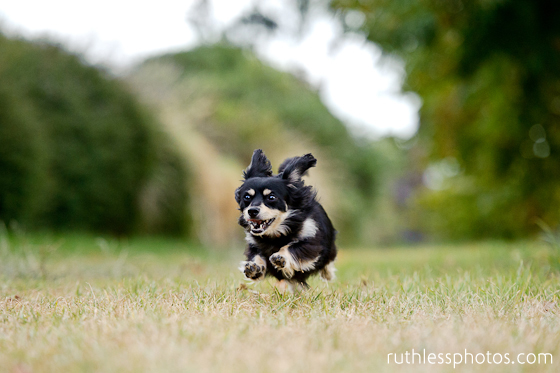This post is part of the series in response to Dunbar’s 2012 Australian seminars. See index.
Dunbar advocated what he called ‘repetitive reinstruction’ as a form of verbal punishment for dogs that do not obey a trained cue.
He called this technique negative punishment (taking away something good), but this only happens if you are always rewarding the behaviour in the first place. Repetitive reinstruction is taking away the ‘nice sweet speaking person’ and you get ‘annoying and over the top’ person. It works quickly, and response reliability increases after successive trials.

This is Dexter, a young Staffy X available for adoption through Adelaide All Breed Dog Rescue. Click his picture to visit their Facebook page.
The best way to illustrate this technique is by describing training a distance sit. Here is the process:
1) While the dog is playing, grab the dog by the collar, give them a treat, then release them to continue play.
2) While the dog is playing, grab the dog by the collar, ask for a sit, give treat, and then release them to continue play.
3) Without touching the dog, cue sit, then grab the collar, give a treat, and send them to play.
4) From a casual position, cue “sit” as many times as necessary (perhaps decreasing distance and increasing urgency in voice) until the dog sits. Once the dog sits, release the dog, ask for a second sit, reward when the dog sits on the first cue, treat the dog, and send it to go play.
In this way, the dog is repetitively reinstructed to perform the behaviour until it does so. Though this may be a number of cues in the first instance, over time, the number of cues will reduce to 1-2 cues. He assures us that this does work – the number of responses increases per the number of cues, over time.
Dunbar acknowledges that collar grabs should always be associated with good things, in order to reduce the likelihood of dog bites from this interaction (touching a dog collar is often a precursor to a dog biting).
Obedience competition has made a second cue a ‘crime’. In reality, we are aiming for one cue eventually, but it’s okay to use multiple cues in training. Dunbar has collected figures to graph the improvement and there is an improvement over time (i.e. the number of cues diminishes).
Not only is this repetitive reinstruction, it is also specific redirection. It is instructing the dog what to do in order to stop the negative punishment. This can be a useful way to direct the dog during ‘crazy times’ (when the dog is over aroused, like when the doorbell goes).
Dunbar argues that the cue doesn’t become ‘irrelevent’, because if the dog doesn’t perform the first time, the cue was irrelevant anyway.
This is one of the more controversial suggestions from Dunbar, with many dog trainers advocating for one cue only.
Suggested further reading:
Patricia McConnell on repeated cues.
“Rover, sit. Sit. SIT. SitSitSit!!!” – a review of Dunbar’s suggestions by Boulder Dog.
 I am proud to announce that Some Thoughts About Dogs was voted as one of the ‘Top 107’ pet blogs. A pretty cool honour. If you have the time, there are 106 other pet blogs you can click through to. Phew!
I am proud to announce that Some Thoughts About Dogs was voted as one of the ‘Top 107’ pet blogs. A pretty cool honour. If you have the time, there are 106 other pet blogs you can click through to. Phew!



